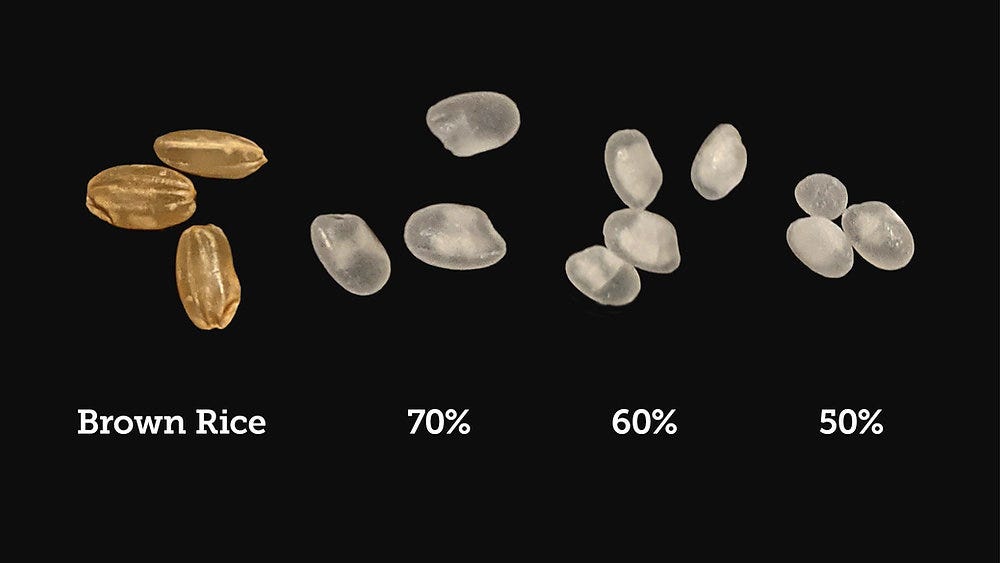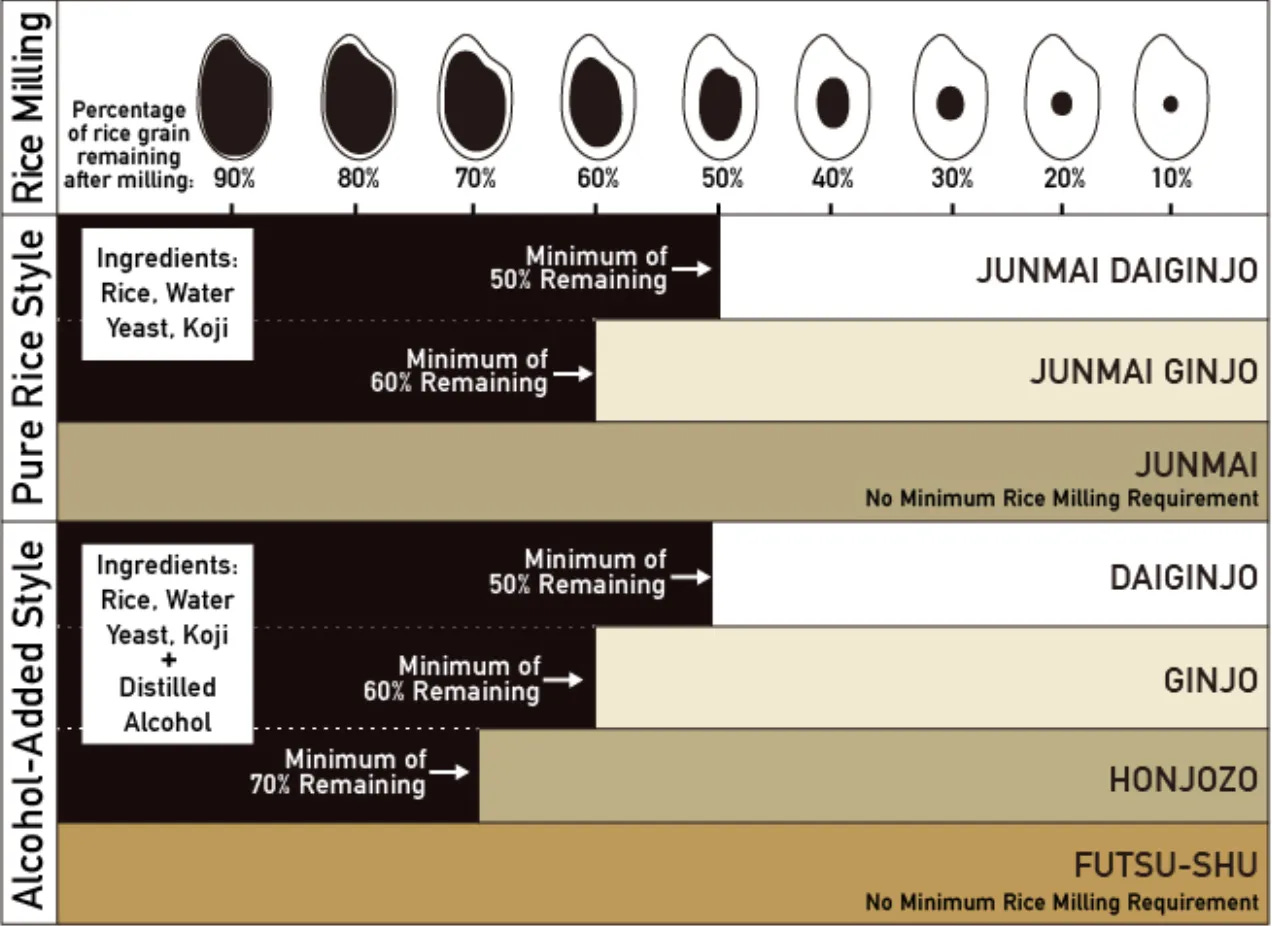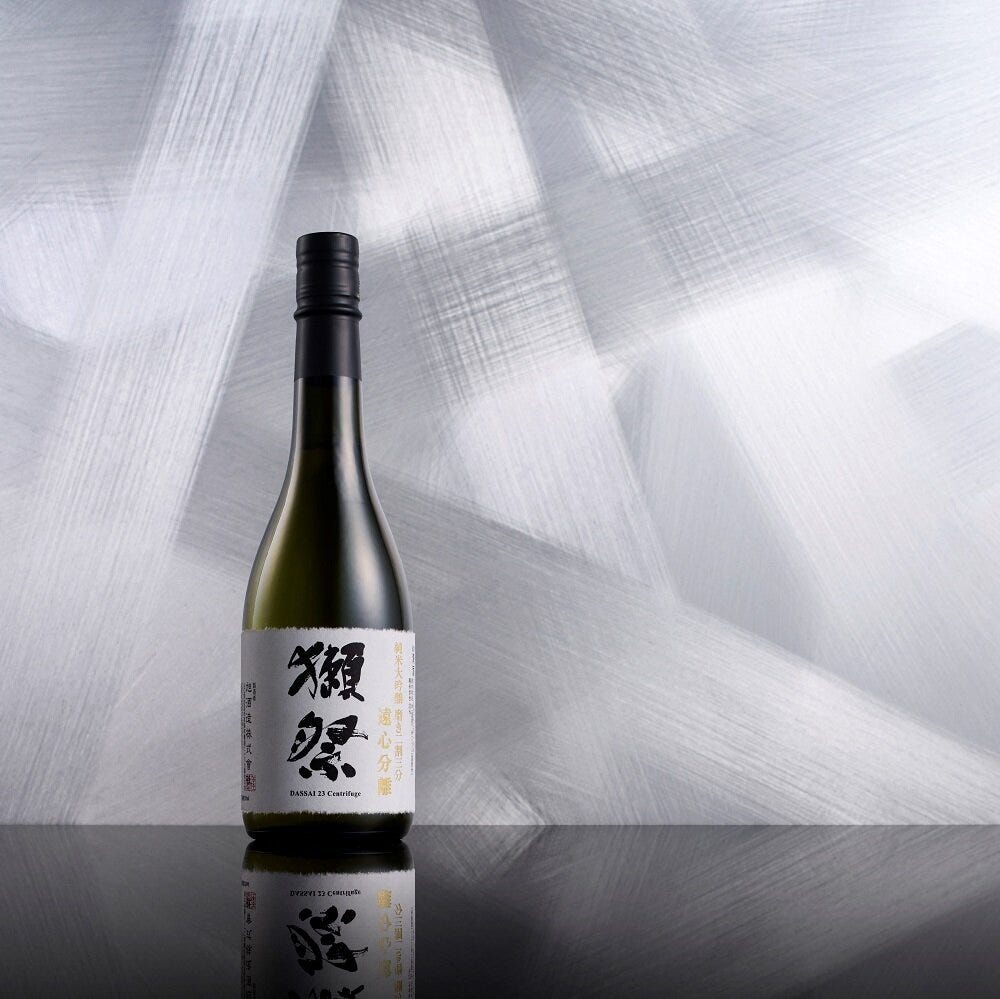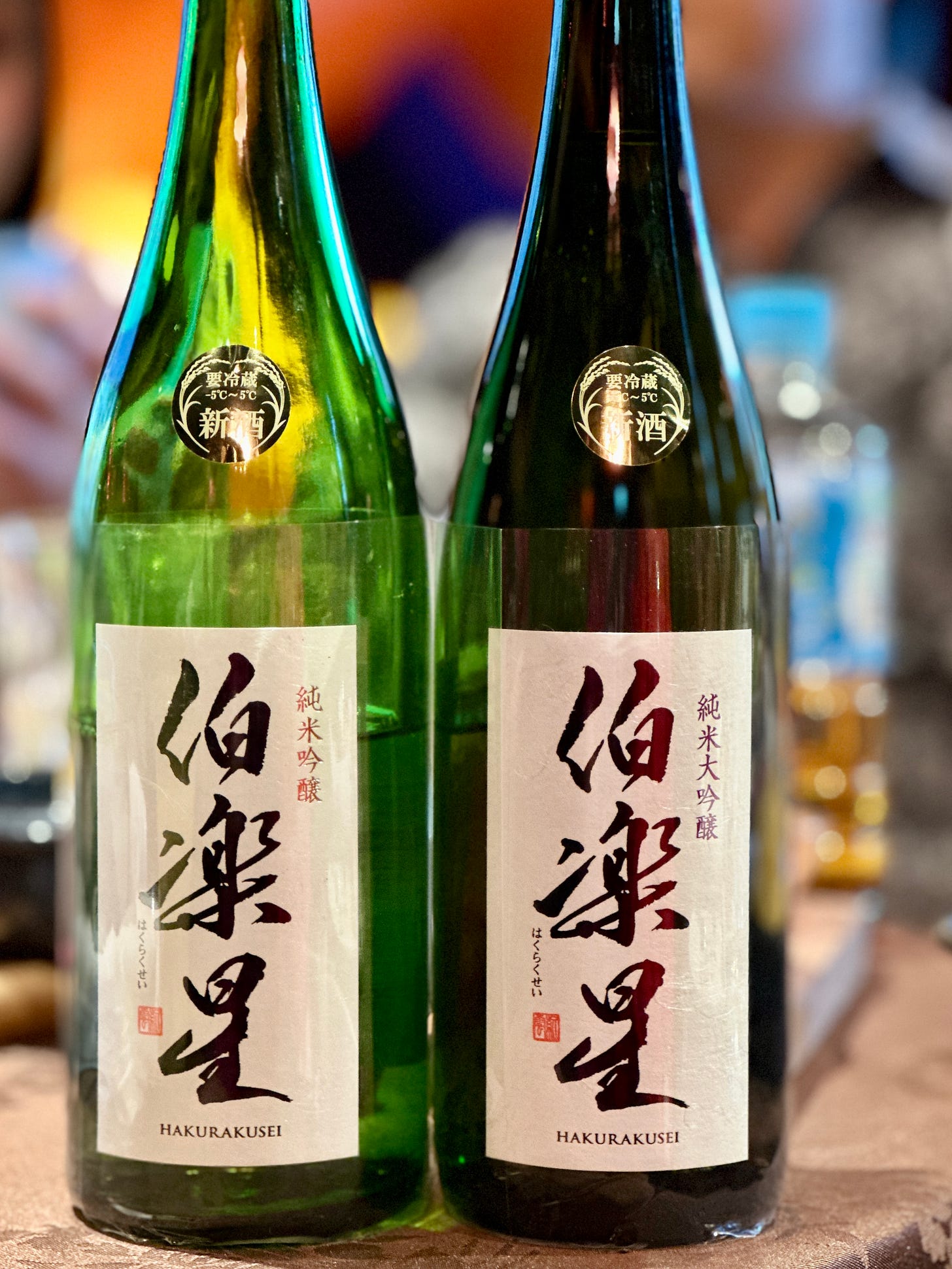Sake101 #2: Understanding The Role of Polishing Ratio
Does a Higher Polishing Make Better Sake? Discover How Polishing Shapes Flavor, Style, and Elegance in Every Sip
Ever seen the phrase "polishing ratio xx%" on a sake bottle?
Sake is made from rice, kōji (steamed rice with beneficial mold), water, and yeast. The polishing ratio of the rice plays one of the key roles in shaping the aroma and flavor of the sake. This is why terms like Junmai Daiginjō and Ginjō are often tied to specific polishing ratios.
In general, sake with a lower polishing ratio—such as 50%—is often seen as more premium compared to one with a higher ratio, like 70%. A lower polishing ratio (where more of the rice grain is removed) reminds me of grape sorting, where repeated refinement and selecting only the best parts can lead to higher quality. However, this isn’t true for sake. A lower polishing ratio doesn’t automatically mean better quality. Why is that? Then how does it impact the flavor?
By understanding the significance of the polishing ratio, you’ll be able to make more comfortable choices about the sake you enjoy. Let’s explore the details!
Rice Grains: Layers of Umami and Elegance
A rice grain consists of several layers: the bran, endosperm, and starch.
Bran: The outer layer, rich in proteins, lipids, vitamins, and minerals.
Endosperm: The pale, translucent layer beneath the bran contains a mix of starch, proteins, and lipids in smaller amounts.
Starch: The dense, white core of the grain. The pure starch is highly fermentable and forms the base for clean, elegant sake.
Polishing removes the bran and a part of the endosperm. Proteins, lipids, vitamins, and minerals are nutrient, but excess amount of them would produce unbalanced and rough flavors. On top of that, more difficult to handle in the brewing process. Polishing leaves an ideal balance of starch and other components to achieve the brewer’s desired style.
This process is closely tied to categorizations like Junmai Daiginjō (typically polished to 50% or less) and Ginjō (up to 60%). On sake labels, the polishing ratio shows how much of the rice grain remains after polishing. For example, a 60% polishing ratio means 40% of the rice grain has been removed.
Polishing to Perfection
Unlike wine, where grape variety significantly impacts flavor, the differences between sake rice varieties are more subtle. Nevertheless, they remain critical to the brewing process.
Sake Rice Varieties
Sake brewing typically uses Japonica rice, categorized as:
Table Rice: Everyday rice for meals.
Sake-Specific Rice: Specially cultivated for brewing, featuring larger grains with a big starch core and lower protein content. Notable examples include Yamadanishiki and Omachi.
The sake-specific rice is good at producing refined and elegant styles of sake. However, it requires meticulous care both in cultivation and brewing. The plants are taller, making them more fragile, and the grains are prone to cracking, demanding delicate handling. These factors contribute to the high cost of sake-specific rice, which is why it’s typically reserved for premium-grade sake. In fact, sake-specific rice accounts for only 2–3% of Japan’s total rice production.
When polished down to 50% or less, the large starch cores of sake-specific rice become the primary focus, resulting in pure, transparent, and elegant styles known as Daiginjō. This pursuit of purity often leads to extreme cases not only for competitions, but also where consumers have come to appreciate this ultra-refined style.
A well-known example is Dassai 23 Centrifuge, crafted from Yamadanishiki rice polished to just 23% of its original size.
For the ultimate in polishing extremes, Tatenokawa Shuzo produces Tatenokawa Komei, made with a 1% polishing ratio after 1,800 hours of polishing. This sake is priced at an astounding about €2,000 (¥242,000)!
Exploring Higher Polishing Ratios
Let’s talk back to normal polishing ratio. The polishing ratio that you might see often will be 50%, 60%, and 70% and sometimes higher than 70% or lower than 50%.
On the other end of the spectrum of the extreme purity, sake with higher polishing ratios (e.g., 80%) stands out. The style retains more of the rice’s natural flavors and umami, resulting in a robust and earthy profile. Take Kirei 80 as an example.
Brewed with an 80% polishing ratio, this sake embodies simplicity with a bold, crisp, and dry profile. It features subtle notes of toasted rice and earthiness, complemented by straightforward flavors and a satisfying umami depth. Its versatility shines, making it an ideal match for a variety of dishes, from grilled fish and yakitori to roasted chicken or creamy pasta.
Sake with a higher polishing ratio has been gaining popularity in recent years. Perhaps it’s due to its incredible food-pairing versatility, simply the desire to explore something new, or even its appeal for health-conscious drinkers (thanks to the higher vitamin content from the endosperm). Whatever the reason, the most important thing is if you like or not!
Comparing Styles Side by Side
Recently, I had the opportunity to try two sakes from Hakurakusei, crafted by Niizawa Brewery in Miyagi Prefecture, side by side. Renowned for its philosophy of creating “food sake,” Hakurakusei focuses on producing sakes that harmonize beautifully with a wide range of dishes. Both sakes I tasted have earned accolades in competitions and showcase distinct styles due to their differing polishing ratios.
The two bottles were:
Ginjō (left bottle) with a 60% polishing ratio (40% of the rice removed).
Junmai Daiginjō (right bottle) with a 50% polishing ratio (50% of the rice removed).
Both sakes were delicate and elegant on the nose, offering exquisite Ginjō aromas such as pear, melon, passionfruit, floral notes, and subtle rice nuances like rice flour or porridge. However, the real difference emerged on the palate.
Junmai Daiginjō: Incredibly smooth, silky, and refined, with no hint of bitterness. It has a purity that can be described as “like water” in the best sense—clean and delicate, allowing the aromas to take center stage. It’s the kind of sake I’d enjoy sipping on its own to fully appreciate its sophistication.
Ginjō: Offers more texture, umami, and weight on the mid-palate, creating a richer and more robust profile. This sake is wonderfully food-friendly, pairing effortlessly with various dishes.
Both styles are beautiful in their own right, but they cater to different occasions. While the Junmai Daiginjō shines as a standalone experience, the Ginjō truly comes to life alongside a meal. It’s just two different style, not different quality. I personally preferred the Ginjō, as I’m always drawn to texture and acidity on the palate—characteristics I appreciate in both sake and wine.
Conclusion: Polishing Your Sake Journey
The polishing ratio is a vital factor in determining a sake’s style, but it’s not the only measure of quality. Each ratio offers unique characteristics: the elegance of highly polished Daiginjō, the umami depth of minimally polished sakes like Kirei 80, or the balance of mid-range Ginjō.
By exploring different styles, you can discover the diverse world of sake and find flavors that perfectly match your preferences and pairings. Whether you’re savoring a premium brew or an everyday favorite, there’s a sake for every occasion.
Cheers to your next sake adventure! 🍶










Thank you for your comment. I am happy to introduce sake to wine professional because I realise you are interested in it. I am thinking to do masterclass some day. I hope you to join it:)
Thanks for explaining this! I know almost nothing about sake but I was very intrigued by this polishing business at a recent workshop I went to... I'd love to taste more of it!